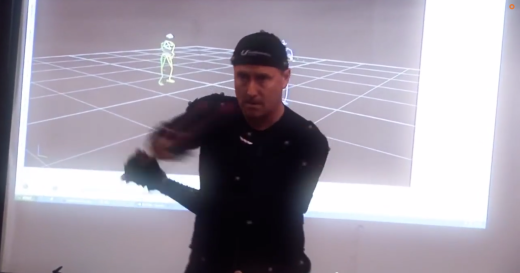Another week, another course. This will be my first reflective assignment regarding the usage of motion capture within interactive media, though not necessarily always for its benefit.
I have chosen to look into how the Total War series, Shogun 2 in particular, has utilised this technology and the reasons for doing so. With Shogun 2 this concept has been taken to colossal scales. It’s both a franchise and a setting that I adore but have also noticed shortcomings in. A reflective work revolving around this would enable me to put down my thoughts into something more substantial.
Shogun 2, like its spiritual predecessors, has its setting in a region and period of time in great turmoil be it civil war or great clashes of civilizations. This installment takes place during the last phases of the Warring States period in feudal Japan through the sixteenth century. With various clans vying for control over the Shogunate and the emperor’s blessing.
(https://www.youtube.com/watch?v=HqmAnAVobPo)
Massive battles over large areas of land are commonplace throughout the game, and to give individual warriors a life-like portrayal Creative Assembly turned to Passive Optical Motion Capture. While costly, it proves useful when you need to record as many animations as possible in order to prevent uncanny repetition throughout the battlefield. Its flexible utility allows for a more efficient production (Motion Capture för Spel, page 1).
The results are undeniable, as thousands of troops clash with one another the animations truly contribute to bringing it to life. The motion capture helps portray fluidity and speed within realistic bounds flawlessly which would otherwise have taken countless hours to animate manually.
The capturing consisted of mainly two actors that performed various fight scenes concluding in killing moves. The sheer volume of these animations shows the team’s dedication towards creating fully realised battles. I also see how this extended use of these tools proved crippling to the game’s execution. The fact that animations only included (if more were even possible) two characters goes into a deeper, underlying problem which has plagued the Total War series in its later titles.
The overreliance on motion capture as the only means for units to engage one another creates a very different portrayal which poses problems similar to the ones in the previous installment Empire. While impressive on their own, these killing animations are the ONLY way for units to engage each other. This results in a strange queue lining of people waiting to perform a killing animation on a single target, while everyone else on both sides simply take turns to perform their own, whereas in previous titles such as Medieval 2 they could still do simple attack, dodge and parry actions which enabled individuals to support one another and flank their opponents. Such simple and traditional animations might have looked stilted in comparison to what was created through motion capture, but it would have made it possible for battles to take on a much more varied appearance as warriors would team up on their opponents and actually aid each other and most importantly contribute to the realism in terms of fighting en masse.
Unit collision also suffers from this, as individual warriors tend to bounce off one another in a period where large battles quickly turned into massive crushes. The end result is a cluttered mess as individual units simply stand idle until the game decides who will be killed by whom.
Put simply, the resources put into realising these animations makes for a limited interaction between units, therefore the overall experience suffers as a result. They opted to use this technology and little else, showing its limitations when relying on it too much when trying to create dynamic portrayals of mass combat. It stands as a lesson for any who would want to extensively make use of such tools, a lesson the developers unfortunately didn’t seem to learn as they began development of Rome 2.
References
Uppsala Universitet (2014). Motion Capture för Spel. Charleston, South Carolina
Shogun 2 The Seven Samurai Developer Diary: https://www.youtube.com/watch?v=HqmAnAVobPo (2014-11-16)
Björn Erik Berndtsson. Graphics and Game Design.








Ah yes, the polite fighting system…. How many developers fall victim of that.
It’s a combination of capturing the moves, but also the implementation in engine. The AI needs to be solid enough to handle it, which fortunately is something Havok especially has done great advances with.
Maybe the next one will have the best of both worlds 🙂